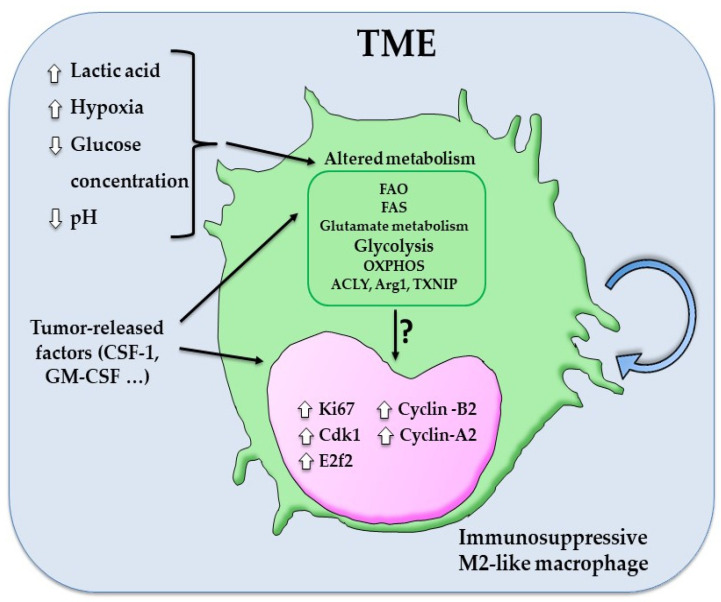Figure 4.
TME factors and metabolic signature are associated to TAMs self-renewal. Altered metabolic profile of TME, characterized by high concentrations of lactic acid, increased hypoxia, low glucose concentration, and reduction of pH, induces the immunosuppressive M2-like phenotype in macrophages [161,162]. TAMs show a unique metabolism capacity dependent to FAS, FAO, OXPHOS, altered glycolysis, and glutamate metabolism, as well as a high increase of metabolic enzymes such as Thioredoxin-interacting protein (TXNIP), ATP Citrate Lyase (ACLY), and Arg1 [160]. This specific metabolic phenotype of TAMs, which is induced by mitogenic stimuli, such as CSF-1 [145,166,167], is associated with an increase of several cell cycle regulators, including cyclin-dependent kinase Cdk1, cyclin-A2 and -B2, and E2f2 [168]. However, how the metabolic reprogramming directly regulates TAMs self-renewal remain to be elucidated.

